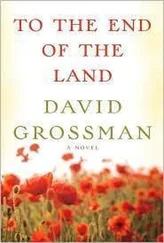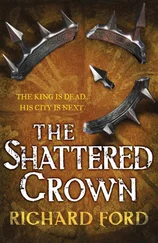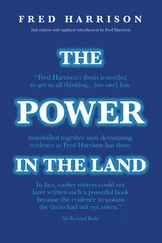In Frederick Schruer’s History of Garden State Development: A Portrait in Contrasts, Conflicts and Chaos (Rutgers, 1984), Sea-Clift is favorably referred to as the “Classic New Jersey Shore Townlette.” Which means that owing to the beach and the crowds, we’re not a true suburb, though there’re plenty of pastel split-levels on streets named Poseidon, Oceania and Pelagic. Neither are we exactly a fishing village, though flounder fishermen and day charters leave from the bay-side wharf. We’re also not exactly a resort town, since most of the year tourists are gone and the steel Fun Pier’s ancient and the rides closed for being life-threatening. There’s not even that much to do in summer except float along in the crowds, hang out in the motel or on the beach, eat, drink, rent a boogie board or stare off.
There is a mix, which has encouraged a positivist small-businessman spirit that’s good for real estate. The 2,263 year-rounders (many are south Italians with enormous families) run things, own most of the businesses, staff the traffic court, police and fire — which makes Sea-Clift more like Secaucus than the ritzier enclaves north of us. Our town fathers long ago understood that xenophobia, while natural to the species, will get you broke quick in a beach town, and so have fostered a not so much “Mia casa é tua casa” spirit as a more level-headed “Your vacation is my financial viability” expedience, which draws eight jillion tourists to our summer streets, plus a stream of new semi-affluent buy-ins from Perth Amboy and Metuchen, all of it spiced with Filipinos, Somalians and hard-working Hondurans (who come for the schools) to brew up a tranquil towny heterogeneity that looks modern on paper without feeling much different from the way things have always felt.
For me, transacting the business of getting people situated under roofs and into bearable mortgages and out again, Sea-Clift couldn’t be a better place — real estate being one of our few year-round business incubators. People are happy to see my face, know that I’m thriving and will be there when the time comes, but still don’t have to have me to dinner. In that way, I’m a lot like a funeral home.
V ery little’s abuzz and about today in spite of Thanksgiving being tomorrow. A few home owners down the residential streets are employed in pre-holiday cleanup, getting on ladders, opening the crawl space for termite checks, putting up storms, spooling hoses, closing off spigots, winterizing the furnace. In a town where everybody comes in the summer, now’s when many year-rounders take their three-day trips — to Niagara and the Vietnam Memorial — since the town’s theirs and empty and can be abandoned without a worry. Which doesn’t make now a bad selling season, since niche buyers come down when the throngs are gone, armed with intent and real money to spend.
Of course, now’s when any prudent newcomer — a software kingpin with new development dollars — would notice all that we don’t offer: any buildings of historical significance (there are no large buildings at all); no birthplaces of famous inventors, astronauts or crooners. No Olmsted parks. No fall foliage season, no sister city in Italy or even Germany. No bookstores except one dirty one. Mark Twain, Helen Keller or Edmund Wilson never said or did anything memorable here. There’s no Martin Luther King Boulevard, no stations on the Underground Railroad (or any railroad) and no golden era anyone can recollect. This must be true for plenty of towns.
There is, however, little teen life, so car thefts and break-ins are rare. You can smoke in our restaurants (when they’re open). The Gulf Stream moderates our climate. Our drinking water’s vaguely salty, but you get used to it. We were never a temperance town, so you can always find a cocktail. College Board scores match the state average. Two Miss Teenage New Jerseys (’41 and ’75) hail from here. We stage an interesting Frank Sinatra impersonator contest in the spring. Our town boundary abuts a state park. Cable’s good. And for better or worse, the hermit crab is our official town crustacean — though there’s disagreement over how large the proposed statue should be. You could also say that for a town founded by enterprising Main Line land speculators on the bedrock principles of buy low/sell high, we’ve exceeded our municipal mission with relatively few downsides. Since we’re bounded by ocean and bay, there’re few places where planning problems could ever arise. Water is our de facto open space plus a good population stabilizer. For a time, I sat on the Dollars For Doers Strike Council, but we never did much besides lower parking fines, pass a good-neighbor ordinance so tourists could reach the beach via private property, and give the Fun Pier a rehabilitation abatement the owners never used. Our development committee extended feelers to a culinary arts academy seeking growing room — though we didn’t have any. There was a citizen’s initiative for a new all-cement promenade, but it failed, and for establishing a dinosaur park, though we hadn’t had any dinosaurs and couldn’t legally claim one. Still, as old-timey, low-ceiling and down-market as Sea-Clift is, most people who live here like it that way, like it that we’re not a destination resort but are faithful to our original charter as a place an ordinary wage earner comes for three days, then beats it home again — a town with just a life, not a lifestyle.
I make a stop by my office to pick up the Surf Road keys. Inside, it’s shadowy and dank, my and Mike’s desktops empty of important documents. Mike’s computer (I don’t own one) beams out his smiling picture of himself and the Dalai Lama, which coldly illuminates his Gipper portrait and his prayer flags on the wall. The office has a stinging balsam scent (mingled with a pizza odor through the wall) from the one time Mike burned incense in the john — which I put a stop to. The house keys, with white tags, are on the key rack. I have a quick piss in our bare-bones bathroom. Though when I come out, I see through the window that a car’s stopped out front by my Suburban, a tan Lincoln Town Car with garish gold trim and New York plates. Since it’s too early for a Chicago-style pizza, these are doubtless showcase shoppers eye-balling the house snapshots in the window. They’ll be scared off when they see me, sensing I might drag them in and bore them to death. But not today. I frown out at the car — I can’t see who’s inside, but no one climbs out — then I go back in the bathroom, close the door, stand and wait thirty seconds. And when I come out, as if by magic the space is empty, the Lincoln gone, the morning, or what’s left of it, returned to my uses.
T he client for my Surf Road showing is a welding contractor down from Parsippany, Mr. Clare Suddruth, with whom I’ve already done critical real estate spadework the past three weeks, which means I’ve driven him around Sea-Clift, Ortley Beach, Seaside Heights, etc., on what I think of as a lay-of-the-land tour, during which the client gets to see everything for sale in his price range, endures no pressure from me, begins to think of me as his friend, since I’m spending all this time with nothing promised, comes after a while to gab about his life — his failures, treacheries, joys — lets me stand him some lunches, senses we’re cut out of the same rough fustian and share many core values (the economy, Vietnam, the need to buy American though the Japs build a better product, the Millennium non-event and how much we’d hate to be young now). We probably don’t agree about the current election hijacking, but probably do see eye-to-eye about what constitutes a good house and how most buyers are better off setting aside their original price targets in favor of stretching their pocketbooks, getting beyond the next dollar threshold — where the houses you really want are as plentiful as hoe handles — and doing a little temporary belt-tightening while the economy’s ebb and flow keeps your boat on course and steaming ahead.
Читать дальше












